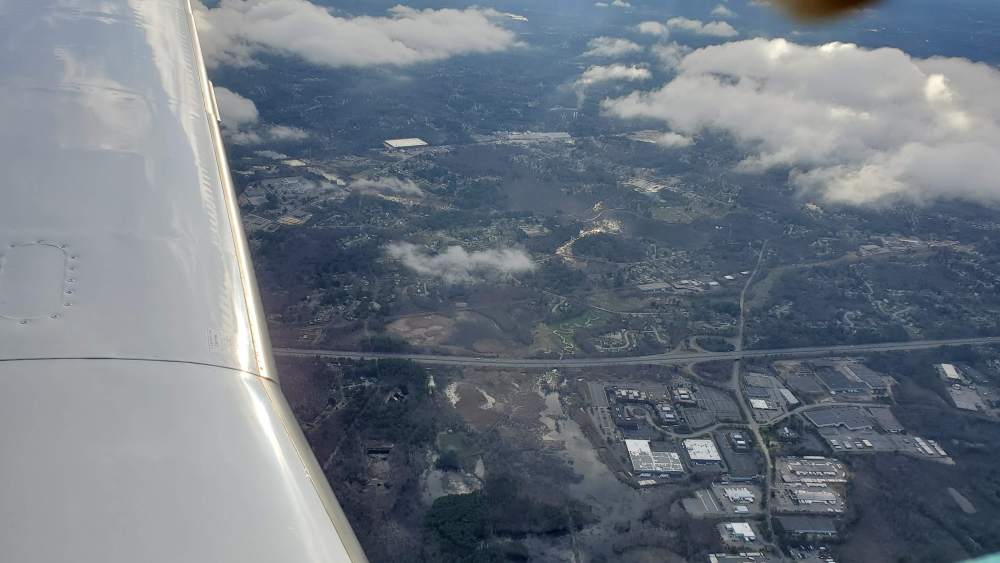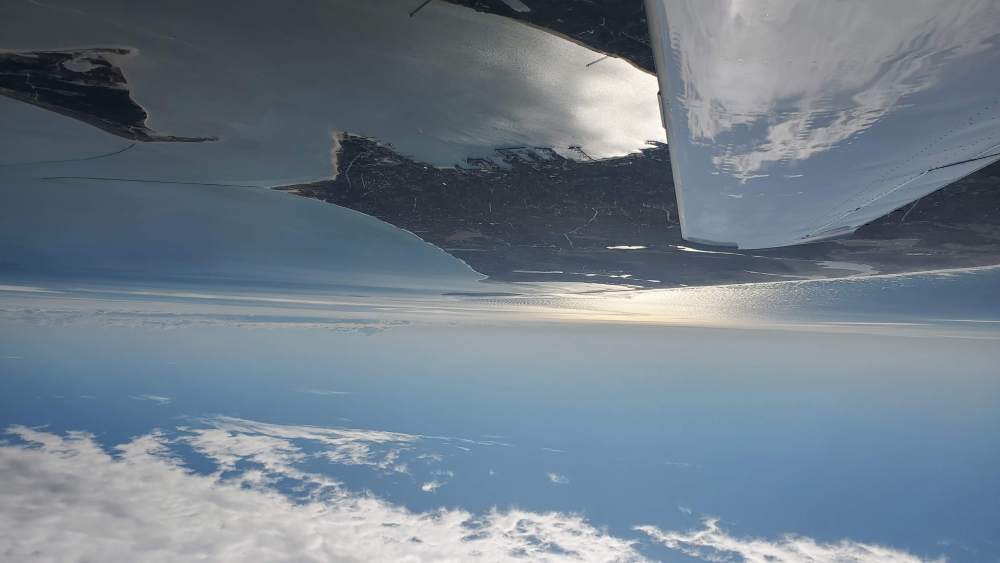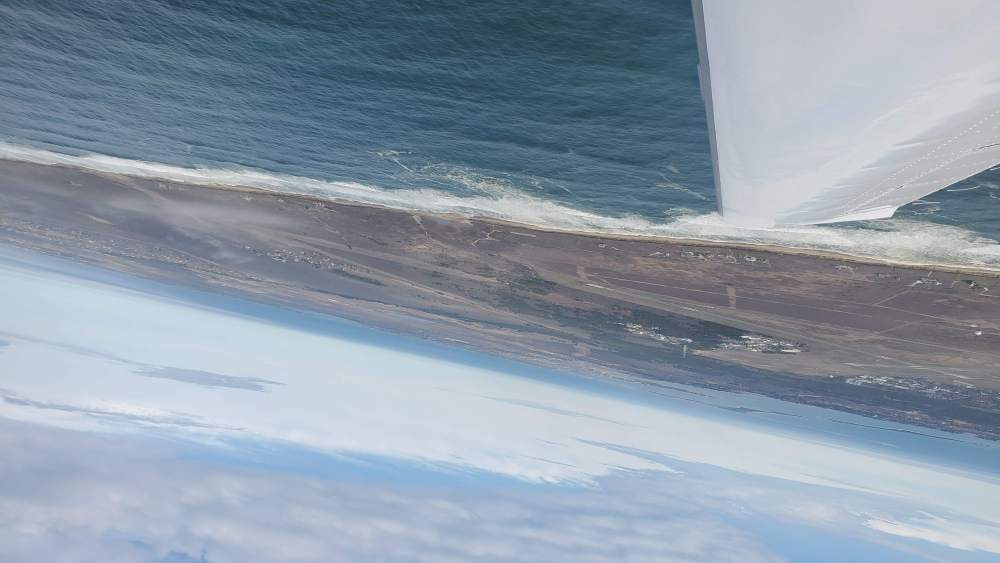
Tim Jodice
Basic Member-
Posts
530 -
Joined
-
Last visited
-
Days Won
3
Content Type
Profiles
Forums
Blogs
Gallery
Downloads
Media Demo
Events
Everything posted by Tim Jodice
-
Switching to Phillips Victory 20w50?
Tim Jodice replied to toto's topic in Miscellaneous Aviation Talk
I don't. My A&P told me it would be a waste for me because of how often (30-40hrs a month) I fly. That said he thinks the stuff is awesome for planes that sometimes sit for weeks at a time said he has never seen a Lycoming eat a cam that has used it. He thinks the Lycoming additive is important. Sounds obvious but he said some people don't use it. -
Cannot lean mixture without opening cowl flaps
Tim Jodice replied to Gene's topic in Modern Mooney Discussion
- 53 replies
-
- 1
-

-
- hot cylinder
- mixture
-
(and 2 more)
Tagged with:
-
Switching to Phillips Victory 20w50?
Tim Jodice replied to toto's topic in Miscellaneous Aviation Talk
I switched from Aeroshell to Victory as soon as it was available. I found it went from 8-9 hours per quart to 12-13. -
Cannot lean mixture without opening cowl flaps
Tim Jodice replied to Gene's topic in Modern Mooney Discussion
You are my hero! HUGE difference! Just as you said it is now the coolest cylinder, cooled down by about 30-40 degrees. Thank you for the help.- 53 replies
-
- 1
-

-
- hot cylinder
- mixture
-
(and 2 more)
Tagged with:
-
Cannot lean mixture without opening cowl flaps
Tim Jodice replied to Gene's topic in Modern Mooney Discussion
I don't. I have an older insight.- 53 replies
-
- hot cylinder
- mixture
-
(and 2 more)
Tagged with:
-
Cannot lean mixture without opening cowl flaps
Tim Jodice replied to Gene's topic in Modern Mooney Discussion
I feel like a dumb ass. No I haven't. Something so simple yet I over look it. I will do that tonight. Thanks- 53 replies
-
- hot cylinder
- mixture
-
(and 2 more)
Tagged with:
-
Cannot lean mixture without opening cowl flaps
Tim Jodice replied to Gene's topic in Modern Mooney Discussion
With the weather warmer I am running to this exact problem. Friday and today I had to go to about 50-75 LOP with approximately a 5 knot loss to keep Cylinder 1 between at about 380-400. All of the other cylinders are 350 or lower and oil is 1/3 -1/2 on the factory scale. A little background, I replaced the baffles at annual because even in the winter the engine was running hot on all cylinders and they were in bad condition. The new baffles made a big difference, brought all of the cylinder and oil temperature down. None of the cylinders have the spark plug thermocouple. It has a fuel spread of .5 cylinder 1 is the second from the last to peak. This is only in cruise with the cowl flaps closed. Full rich cowl flaps open in the climb it is easy to keep it below 380 however cylinder 1 is still the hottest cylinder. All I have done so far is swap thermocouples with no change. Bonanza friends talk about a non factory cooling mod that takes care of a temperature issue with I think cylinder 6. Are there any for J models? Thoughts?- 53 replies
-
- hot cylinder
- mixture
-
(and 2 more)
Tagged with:
-
Useful load, how important is it to you?
Tim Jodice replied to Tim Jodice's topic in General Mooney Talk
Two DA40 owners! What did you like/not like about them? What were real cruise numbers? Typical useful load? I heard those long wings make them have great climb performance even when it is hot. Lastly why did you end up selling them? -
Useful load, how important is it to you?
Tim Jodice replied to Tim Jodice's topic in General Mooney Talk
That makes sense. I had heard that the are one of if not the safest piston singles. Also I bet they had diesel on there mind too. 40 gallons of diesel probably gives great range. -
Useful load, how important is it to you?
Tim Jodice replied to Tim Jodice's topic in General Mooney Talk
I have no proof but I will bet that Diamond put small (relative to legacy aircraft) tanks specifically so that they could brag about the full fuel useful load. Most people want that number to be as high as possible. Referencing Diamond's website it says 65% is 8.2GPH. Round up to 9 and you have a flight time of approximately 3.5 hours plus 1 hour reserves. That just so happens to be what most people are willing to sit in an airplane for. I personally think 64 gallons in a J is just right. And for those who want more you can always have a Monroy STC done. How awesome is that? What is everyone's opinion on fuel capacity? I know this will bring up "yeah but". If you could have the ability to have 200 dare I say 300 gallons in an any mooney would you want it? Would you like it if you had the fuel capacity to go from Texas to Hawaii then shoot 3 approaches and still have enough left to go back to Texas? -
Useful load, how important is it to you?
Tim Jodice replied to Tim Jodice's topic in General Mooney Talk
I must be thinking of a different airplane. -
Useful load, how important is it to you?
Tim Jodice replied to Tim Jodice's topic in General Mooney Talk
I suspect that I am not reading this correctly because it seems to easy. Standard is simply pitot heat and alternate air. TKS has, wing light, prop slinger, heated stall switch and the panels. I think newer models also have heated fuel and static vents. -
Useful load, how important is it to you?
Tim Jodice replied to Tim Jodice's topic in General Mooney Talk
Even after dreaming about an amazing panel that would remove a lot of weight. It likely would make the most sense to do what you plan on doing and just buy a airplane that is the way i need it to be. Not efficient but I got a ride in a 2005 Saratoga and I thought it was a really nice airplane. -
Useful load, how important is it to you?
Tim Jodice replied to Tim Jodice's topic in General Mooney Talk
I thought 252s are even more efficient than 201s. That said I agree that any ice on a relatively low powered airplane is a bad situation to be in and that is why when there is even the slightest chance of ice i have the system on. At about 130 miles I can't imagine flying to the flight levels would make sense. However I have never owned a turbo airplane so please correct me if I am wrong. No doubt that having a out if it gets bad is a necessary part of preflight, to date I have never needed to exercise it. If icing is reported by another aircraft then it is no go. If it is obvious such as freezing to the ground with an overcast then it is no go. If there is potentially freezing rain then it is a no go. -
Useful load, how important is it to you?
Tim Jodice replied to Tim Jodice's topic in General Mooney Talk
Agreed, however as an instructor demonstrated on paper and I have experienced first hand you don't know until you know. I don't mean to sound like a smart ass but there have been many times that based on 2 degree drop per 1000 feet there should have been ice yet no pireps for icing. Followed by taking off and there being a temperature inversion therefore no ice. Another example is getting on top of the clouds before it is below freezing. Obviously that doesn't happen every time so if I pick up ice it buys me time to get out. In my experience is even when I do pick up ice it is not much and the TKS works so well the only way I know I am picking any up is it it builds up on the little fin on the wing tip by the nav light. Naturally if it is below freezing on the ground and a 800" overcast or there is a chance of freezing rain then it it a no go. Over about 80-90 hours this past winter I have used (wasted) about 25-30 gallons of fluid because there could have been ice. I used maybe 2-3 gallons that actually kept ice off. As has be said by many when it is warm enough I won't carry a full tank. Which will be nice given gross weight summer performance. Fortunately both airports I use regularly have 7,000'+ runways so i am never in need of max performance take off. Currently I do keep it full because up until about now there was always a chance to get some ice. Given my flight lasts about an hour even if I had it on deice mode (I refer to it as oh $hit get out NOW mode) I would still have twice as much as I need. Except for a system check verifying that all of the panels get wet before taking off I have never needed that mode to keep the ice off. As it has been said here many times the systems are identical except for a second pump and alternator both of which are simply for redundancy not better performance. If you never fly in what might have ice what is point of having it? If I remember correctly people on here have said the systems are around $50,000 installed. That seems like a extremely expensive way to have silver jet like leading edges. Plus a 100 pound hit on useful load that is essentially useless. Lastly on going maintenance and crazy expensive fluid. -
Useful load, how important is it to you?
Tim Jodice replied to Tim Jodice's topic in General Mooney Talk
How much heavier are legacy autopilots than a new one? -
Useful load, how important is it to you?
Tim Jodice replied to Tim Jodice's topic in General Mooney Talk
Agreed, I would make sure of that. -
Useful load, how important is it to you?
Tim Jodice replied to Tim Jodice's topic in General Mooney Talk
It is 100 pounds full. -
Useful load, how important is it to you?
Tim Jodice replied to Tim Jodice's topic in General Mooney Talk
Did I say it is an awesome day! 5:30 traffic out of Boston. Looks like Sunday morning. Different times. -
Useful load, how important is it to you?
Tim Jodice replied to Tim Jodice's topic in General Mooney Talk
Thanks for the photo flip. -
Useful load, how important is it to you?
Tim Jodice replied to Tim Jodice's topic in General Mooney Talk
-
Useful load, how important is it to you?
Tim Jodice replied to Tim Jodice's topic in General Mooney Talk
-
Useful load, how important is it to you?
Tim Jodice replied to Tim Jodice's topic in General Mooney Talk
-
Useful load, how important is it to you?
Tim Jodice replied to Tim Jodice's topic in General Mooney Talk
I will be the first to say you are the norm I am the exception, most of my friends do what you do. i i don't put the plane away with full fuel just so that it is full. An example of why i don't is i might want to go for quick flight with friends.... but I can't because I have enough gas to go to Charlotte NC from Boston. A pet peeve I have is that most people I know or have simply had a conversation with look at an airplanes useful load with full tanks. Two airplanes that I think demonstrate that it makes the airplanes utility look horrible. A Mooney Ovation with 102 gal Monroy tanks or most post 1984 Beechcraft Barons with 194 gallons. even is they are minimally equipped they wont have much useful load left with them full. Reading on here most people use about 13-14 GPH for an Ovation. Using 14 GPH that is 6 hours in the air with an hour reserve a Baron at 28GPH is also about 6 hours in the air plus an hour reserve. Who does that all the time? Most people I know have a hard time sitting in an airplane for more than 3-4 hours, much less 6 hours. -
Useful load, how important is it to you?
Tim Jodice replied to Tim Jodice's topic in General Mooney Talk
Most of the avionics is original to the airplane from 85 so lost of stuff with remote boxes in the tail wiring and the vacuum system. the backup electric vacuum pump is 13 pounds all by it self. the TKS is 100 pounds with a full tank. It is a fatty for sure.








